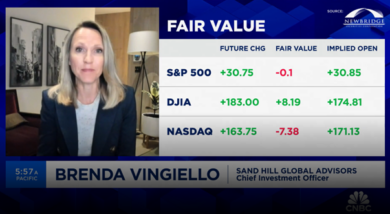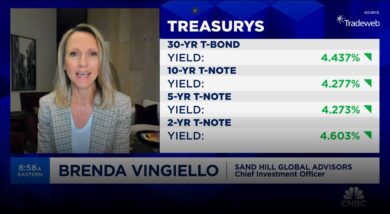“Damn the torpedoes, full speed ahead!”
– Admiral Farragut (paraphrased), August 5th, 1864
In the final year of the American Civil War, as part of a larger effort to blockade Confederate ports, Admiral Farragut entered the heavily mined port of Mobile, Alabama. Tethered, underwater mines were known as ‘”torpedoes” in those days. As his fleet began to pull back in response to one of his lead vessels striking a mine, Farragut shouted arguably the most famous naval saying of all time, forced his fleet to move forward, and ultimately secured the last major port open to the Gulf of Mexico, helping to bring a close to the Civil War.
Much as Admiral Farragut entered Mobile Bay close to 150 years ago, the U.S. economy enters 2015 with strong momentum in its sails, but facing a fair number of potential issues lurking just under its seemingly calm surface.
In some respects, the U.S economy is currently enjoying its strongest momentum in at least a decade. The nation added almost 3 million jobs in 2014 – 30% of all the jobs created since the recovery began – and recorded the best year for employment growth since 1999. Thankfully, following five historically sluggish years of economic recovery, we are no longer debating the “employer’s reluctance to hire” or “how to move past the damage from the housing bubble.” But 2014 was a highly divergent year with the U.S. posting strong results while the rest of the world struggled economically.
When 2014 began, many investors expected the U.S. economy to grow, international economies to improve, and interest rates to rise. Yet only one of those forecasts proved accurate; the U.S. economy posted solid gains while other countries struggled with lackluster economic activity and interest fell – and on top of that, there was the steep sell-off in oil prices. Equity markets around the world reflected the uneven economic results as the S&P500 Index handily outpaced foreign stocks, smaller domestic stocks, and emerging market stocks. In addition, energy stocks unexpectedly tumbled as an oversupply of crude oil, combined with modest weakening global demand, created an imbalance.
The question now at hand is whether our domestic strength can lead the global economy into a better place this year, or with the world stumbling in many respects, whether the U.S. can navigate these seemingly heavily mined waters successfully. As we consider that question, we are focusing on what we believe will be the most critical drivers of economic outcomes in the coming year:
The Fed: In perhaps the most anticipated event of the coming year, the Federal Reserve is planning on being the first central bank globally to begin to tighten monetary policy. Will they be early? Will they be late? Will the slope of their policy tightening be appropriate? Recent disinflationary trends in Europe, falling commodity prices and aging demographics across the developed world only complicate their calculus. That said, our perspective is that the Fed will be “data-dependent,” executing in a well-telegraphed way and only as allowed within the constraints of the environment, making the early rate hikes in 2015 less eventful than in previous years.
The Oil Patch: While the steep decline in commodity prices has been a detractor to investment returns recently, it is ultimately a boon for consumers, particularly at the gas pump. Less money spent on energy means more of a consumer’s wallet share for other venues. Offsetting this clear positive, the sharp and sudden decline has caught some of the riskiest energy companies off-guard – and many of those companies will likely face tough outcomes. But assuming those issues don’t become contagious to the broader economy, the recent fall in oil prices will likely create a nice tailwind to economic growth by the second half of 2015 – resulting in an improved outcome for the economy as a whole.
The Job Market: We created close to 3 million jobs in 2014. Admittedly, wage growth, labor force participation and underemployment still remain issues, and this job market has had more than its fair share of false starts over the years, but 2014 felt like a log jam breaking. At the current rate of improvement, we will reach “full employment” late in 2015, and with some luck, many of those lingering quality issues will dissipate. With the U.S. consumer being the primary driver of the U.S. economy, more jobs means more spending, and this in turn gives us more confidence in this moderate expansion continuing in 2015.
The Developed Economies: Europe and Japan remain highly accommodative in terms of monetary policy, yet both regions had a tough 2014 economically. Europe remains a wildcard in terms of economic growth in 2015 but those concerns are likely to lead to significant central bank easing early in 2015, usually a catalyst for local stock markets. Meanwhile, Japan appears to be on the road to recovery but the fiscal stimulus plan known as “Abenomics” remains inconclusive in its effectiveness. We continue to watch the international landscape closely as the outcomes are less certain.
The Developing Economies: From the perspective of a low single digit rate experienced in the developed world, Chinese growth remains impressive; but from their historical 10% growth rate over the last decade, 2015’s expected 7% growth rate has caused concern. This worry has ripped through the emerging world and has contributed to the disappointing 5-year period for most emerging stock markets. That said, the long-term investment outlook for China and the emerging markets in general remains very compelling. We increasingly see this disconnect as a long-term buying opportunity, particularly as easier credit and stimulus measures enter the equation.
And finally, Valuation and Earnings: Stock market multiples are neither cheap nor expensive as we enter 2015. Not long ago, “Dow 18K” seemed rather extreme and far-fetched, but steadily improving corporate earnings against a low interest rate backdrop justify current market levels. As the Fed eventually retreats, the markets should act more independently – occasionally testing us with volatility and yet providing real opportunities for those with longer time horizons and well-considered financial plans.
So as we sail into 2015, we do so with an economic tailwind at our backs, but as always, with many unknowns ahead as well. The combination of domestic strength, global weakness and plunging oil prices is new and will present its challenges, but as Farragut would implore, sometimes the best call is to just push through, taking reasoned risks for reasonable outcomes. And that is what we endeavor to do in the coming year.
Articles and Commentary
Information provided in written articles are for informational purposes only and should not be considered investment advice. There is a risk of loss from investments in securities, including the risk of loss of principal. The information contained herein reflects Sand Hill Global Advisors' (“SHGA”) views as of the date of publication. Such views are subject to change at any time without notice due to changes in market or economic conditions and may not necessarily come to pass. SHGA does not provide tax or legal advice. To the extent that any material herein concerns tax or legal matters, such information is not intended to be solely relied upon nor used for the purpose of making tax and/or legal decisions without first seeking independent advice from a tax and/or legal professional. SHGA has obtained the information provided herein from various third party sources believed to be reliable but such information is not guaranteed. Certain links in this site connect to other websites maintained by third parties over whom SHGA has no control. SHGA makes no representations as to the accuracy or any other aspect of information contained in other Web Sites. Any forward looking statements or forecasts are based on assumptions and actual results are expected to vary from any such statements or forecasts. No reliance should be placed on any such statements or forecasts when making any investment decision. SHGA is not responsible for the consequences of any decisions or actions taken as a result of information provided in this presentation and does not warrant or guarantee the accuracy or completeness of this information. No part of this material may be (i) copied, photocopied, or duplicated in any form, by any means, or (ii) redistributed without the prior written consent of SHGA.
Video Presentations
All video presentations discuss certain investment products and/or securities and are being provided for informational purposes only, and should not be considered, and is not, investment, financial planning, tax or legal advice; nor is it a recommendation to buy or sell any securities. Investing in securities involves varying degrees of risk, and there can be no assurance that any specific investment will be profitable or suitable for a particular client’s financial situation or risk tolerance. Past performance is not a guarantee of future returns. Individual performance results will vary. The opinions expressed in the video reflect Sand Hill Global Advisor’s (“SHGA”) or Brenda Vingiello’s (as applicable) views as of the date of the video. Such views are subject to change at any point without notice. Any comments, opinions, or recommendations made by any host or other guest not affiliated with SHGA in this video do not necessarily reflect the views of SHGA, and non-SHGA persons appearing in this video do not fall under the supervisory purview of SHGA. You should not treat any opinion expressed by SHGA or Ms. Vingiello as a specific inducement to make a particular investment or follow a particular strategy, but only as an expression of general opinion. Nothing presented herein is or is intended to constitute investment advice, and no investment decision should be made based solely on any information provided on this video. There is a risk of loss from an investment in securities, including the risk of loss of principal. Neither SHGA nor Ms. Vingiello guarantees any specific outcome or profit. Any forward-looking statements or forecasts contained in the video are based on assumptions and actual results may vary from any such statements or forecasts. SHGA or one of its employees may have a position in the securities discussed and may purchase or sell such securities from time to time. Some of the information in this video has been obtained from third party sources. While SHGA believes such third-party information is reliable, SHGA does not guarantee its accuracy, timeliness or completeness. SHGA encourages you to consult with a professional financial advisor prior to making any investment decision.








